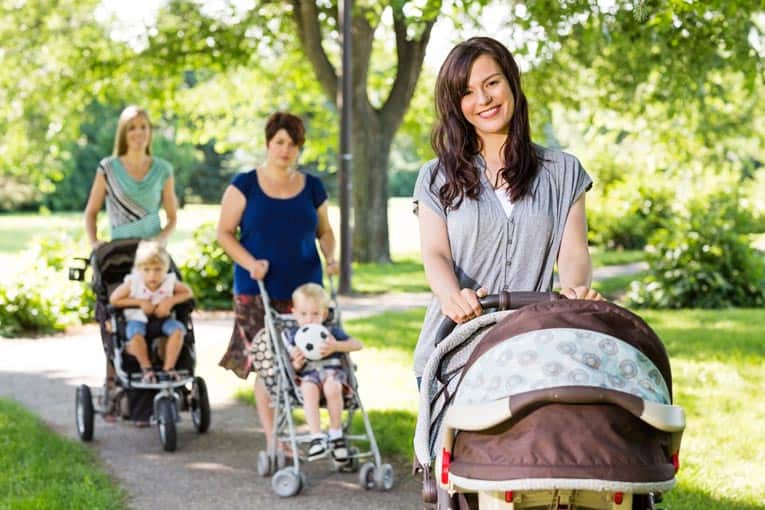 Tyler Olson / Shutterstock.com
Tyler Olson / Shutterstock.com Strollers make outdoor life possible for moms and dads of young ones. This guide will help you make smart buying decisions.
We’re a mobile society, so it’s not surprising that we enjoy a variety of excellent designs for moving our young along with us. Here we take a look at strollers, carriers, and walkers, and the innovations that have made this on-the-go gear safer than ever.
Safe Strollers
For walks to the park or shopping at the mall, a stroller can become almost as essential as the family car. It lets baby lounge in comfort, and it frees a parent from lifting and carrying.
A stroller that reclines completely and is well protected by a canopy can carry newborns. Otherwise, when your baby is about 3 months, start using a canopied stroller that supports the infant in a semi-reclining position. Many parents continue to use the stroller for tired kids up to about age 4.
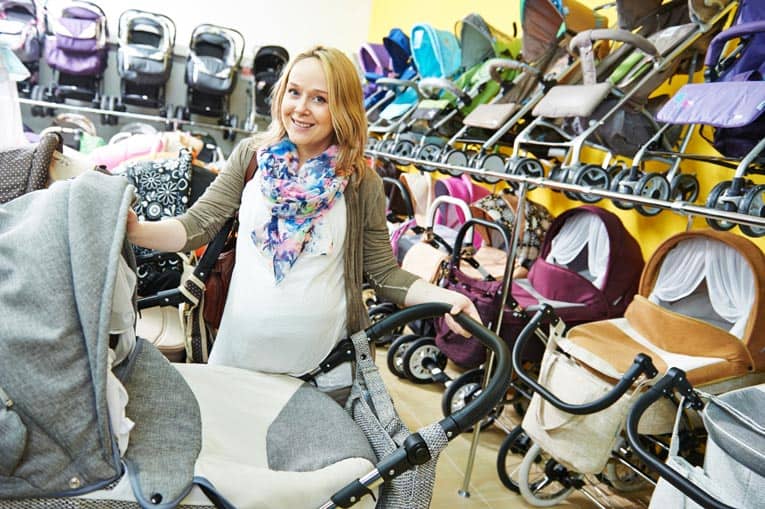 Dmitry Kalinovsky / Shutterstock.com
Dmitry Kalinovsky / Shutterstock.com When shopping for strollers, you’ll discover a plethora of possibilities!
In 1983, the Juvenile Products Manufacturers Association developed a voluntary program for certification of strollers. Look for its certification seal and these safety features when picking one out:
- Select a wide wheel base to guard against tipping, even when your child leans far over one side or reclines backward.
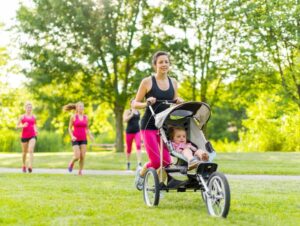 LUMOimages / Shutterstock.com
LUMOimages / Shutterstock.com Tricycle-style strollers with large wheels make jogging fun for baby and mom or dad alike.
- Choose large wheels or sets of double wheels that help stabilize the stroller. Models with swiveling wheels give a smoother ride.
- Make sure that the seat belt is durable—it will get hard use for several years. It should be easy to use so you will fasten it whenever you seat your child in the stroller.
- Test the brake to be sure it is easy to find and operate in a hurry and that it locks the wheels securely. Don’t leave your child unattended in a stroller, no matter how good the brakes are.
- The basket for carrying supplies should be mounted low on the back of the stroller, in front of or directly over the rear wheels.
Don’t sling purses and shopping bags on a stroller’s handles as the weight could tip the stroller.
Safe Baby Carriers
Backpacks, front packs, and infant “carrier” seats have become almost standard equipment for the recently born. Largely, safety depends on their correct and careful use.
Front packs. Designed to keep young babies snug against the chest of a parent, front packs work well until baby weighs about 15 pounds. Choose a front pack that provides good head and neck support, especially if your baby is under 3 months.
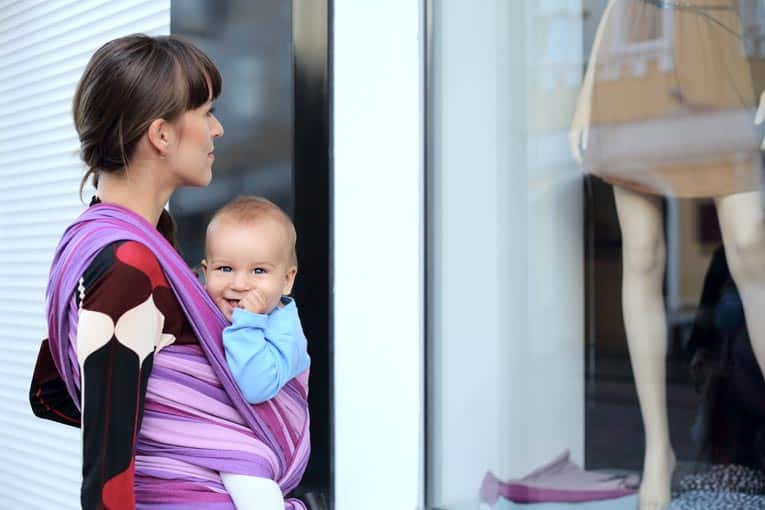 Katsiaryna Drobysheva / Shutterstock.com
Katsiaryna Drobysheva / Shutterstock.com Sling-style baby carrier can be worn with baby either in front or back.
While you’re carrying the baby this way, don’t do anything you wouldn’t do if you were holding the baby in your arms. If you have any kind of back trouble, a front pack may aggravate it.
Backpacks. Intended for older, bigger babies, the backpack you choose should have leg openings that are neither too small nor so large that your child could slip through.
A backpack should have a well-padded edge wherever your baby might bump. It should fit comfortably on you and be easy to take off without risk (there are models that stand on their own). A waist strap helps distribute the weight evenly.
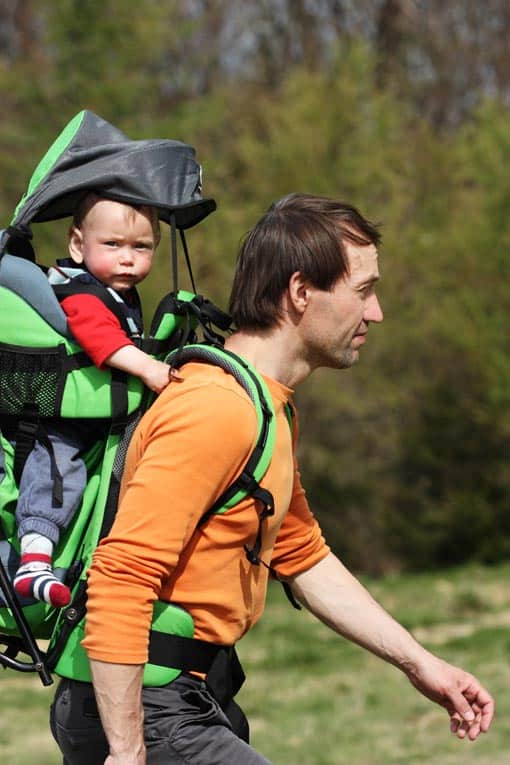 Ffolas / Shutterstock.com
Ffolas / Shutterstock.com Riding in a fully-outfitted baby backpack lets baby hike with dad.
As you carry your baby in a backpack, be sure that he or she is seated deep inside it, with the back fully supported. Bend from the knees—not the waist—while wearing the pack to lessen the risk of baby falling out (it’s easier on your back, too).
Infant carriers. These are sold in a variety of designs, from a plastic lounge chair to a bouncing sling of fabric stretched over a metal frame. Unless used carelessly by adults, carriers are convenient and can be safe and fun.
Make sure that your baby is the right size for the seat, usually under 16 to 20 pounds (follow the manufacturer’s guidelines). Check that the carrier or bounce seat has a wide, stable base. Test it to be sure the base won’t skid as your baby wriggles. If the seat has a metal support that snaps into its back, make sure that it locks securely and won’t pop out.
These chairs must have easy-to-use seat belts—and you should always fasten the belts.
Always place the seat where there is no chance of baby toppling over an edge or pushing off with his or her feet. A tabletop is not safe unless you are sitting right next to your child. Never consider these seats as babysitters, even briefly, and never consider them a safe substitute for a car seat.
Safe Baby Walkers
Baby walkers are much loved by some parents and their small offspring. But other parents and some pediatricians consider walkers unsafe. The main problem is that in the blink of an eye walkers can roll perilously down a flight of stairs—the number one cause of injuries related to them.
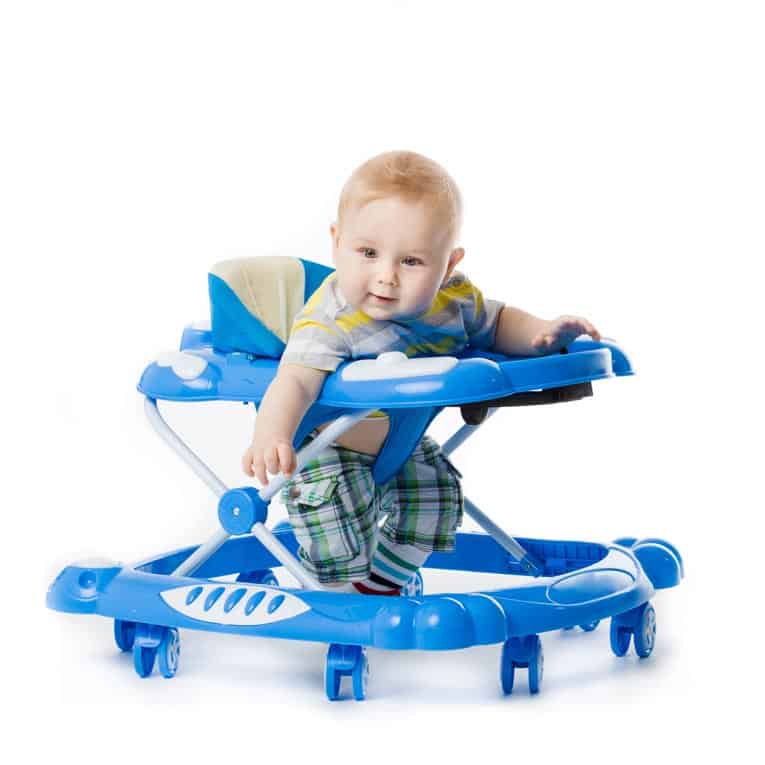 Ewa Studio / Shutterstock.com
Ewa Studio / Shutterstock.com Baby walker can be safe as long as you keep an eye on your baby and make sure he or she can’t get near doorways or stairs.
This is why, in conjunction with the Consumer Product Safety Commission, the Juvenile Products Manufacturers Association sponsored voluntary certification standards for walkers. Today, to be certified, a baby walker must be too wide to fit through a standard-size doorway and must feature some mechanism that prevents the walker from rolling down stairs.
If you are considering a baby walker, look for the “Meets Safety Standard” label. If you have an old baby walker that you still want to use, the CPSC recommends taking the following precautions:
- Close off the top of the stairs, though the safest idea is to keep the walker on the ground floor, blocked off from the door to the basement. Remove throw rugs, which can cause a walker to tip over. Most important of all, stay close and attentive.
- Be sure the walker has no scissoring, shearing, or pinching hinges, springs, or other hardware accessible to your child. There must be no holes (or slots) larger than 1/8 inch in which a finger could get trapped. Make sure the walker can’t collapse accidentally while in use.
- Make sure that the base is wide enough and the wheels are large enough to minimize the risk of tipping. In addition, the seat should be recessed enough to prevent a child from gaining access to hot surfaces, liquid containers, dangling appliance cords, and other dangerous objects.
- Never allow a baby in a walker near a swimming pool or any other source of water, even a toilet.
